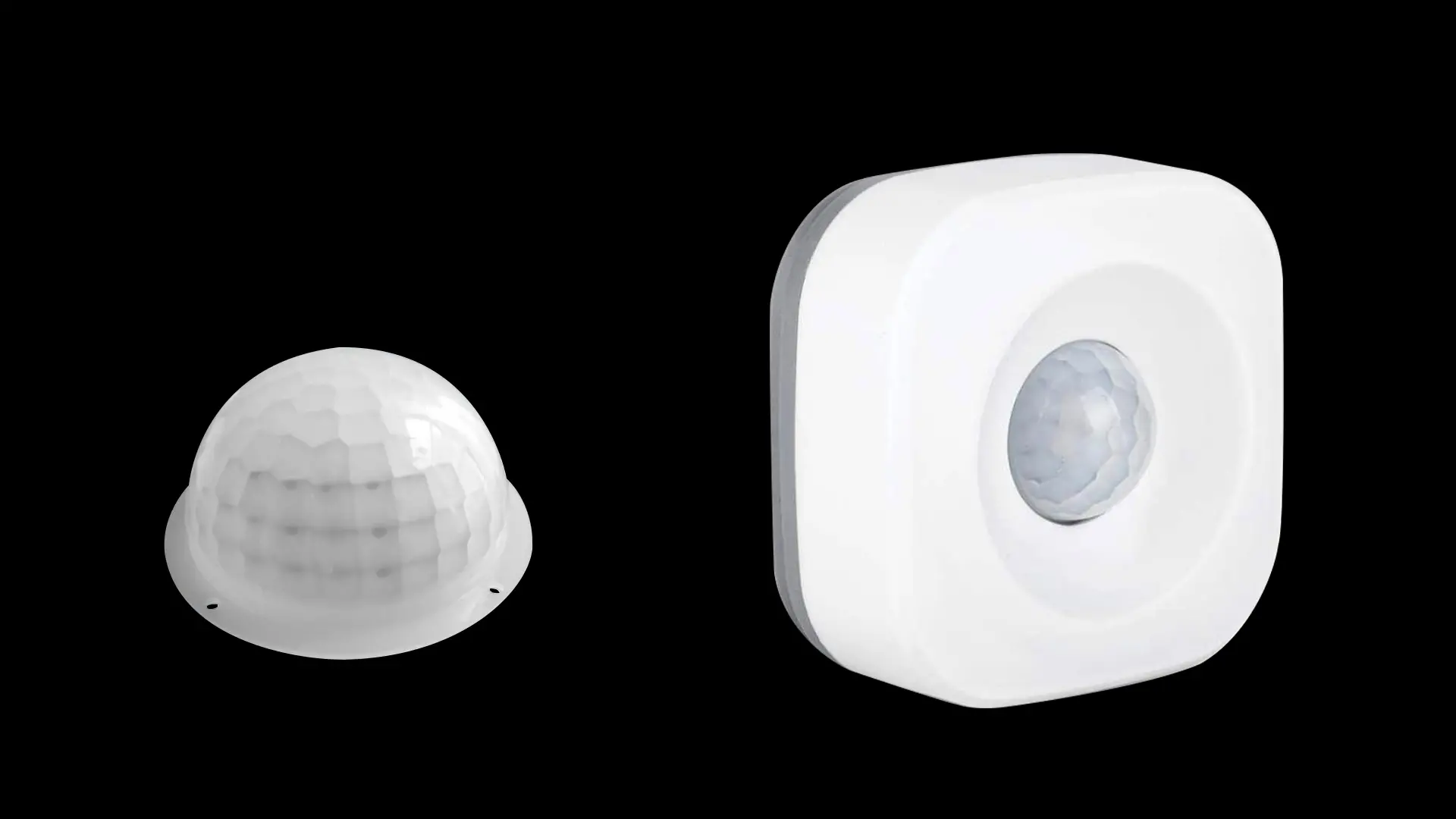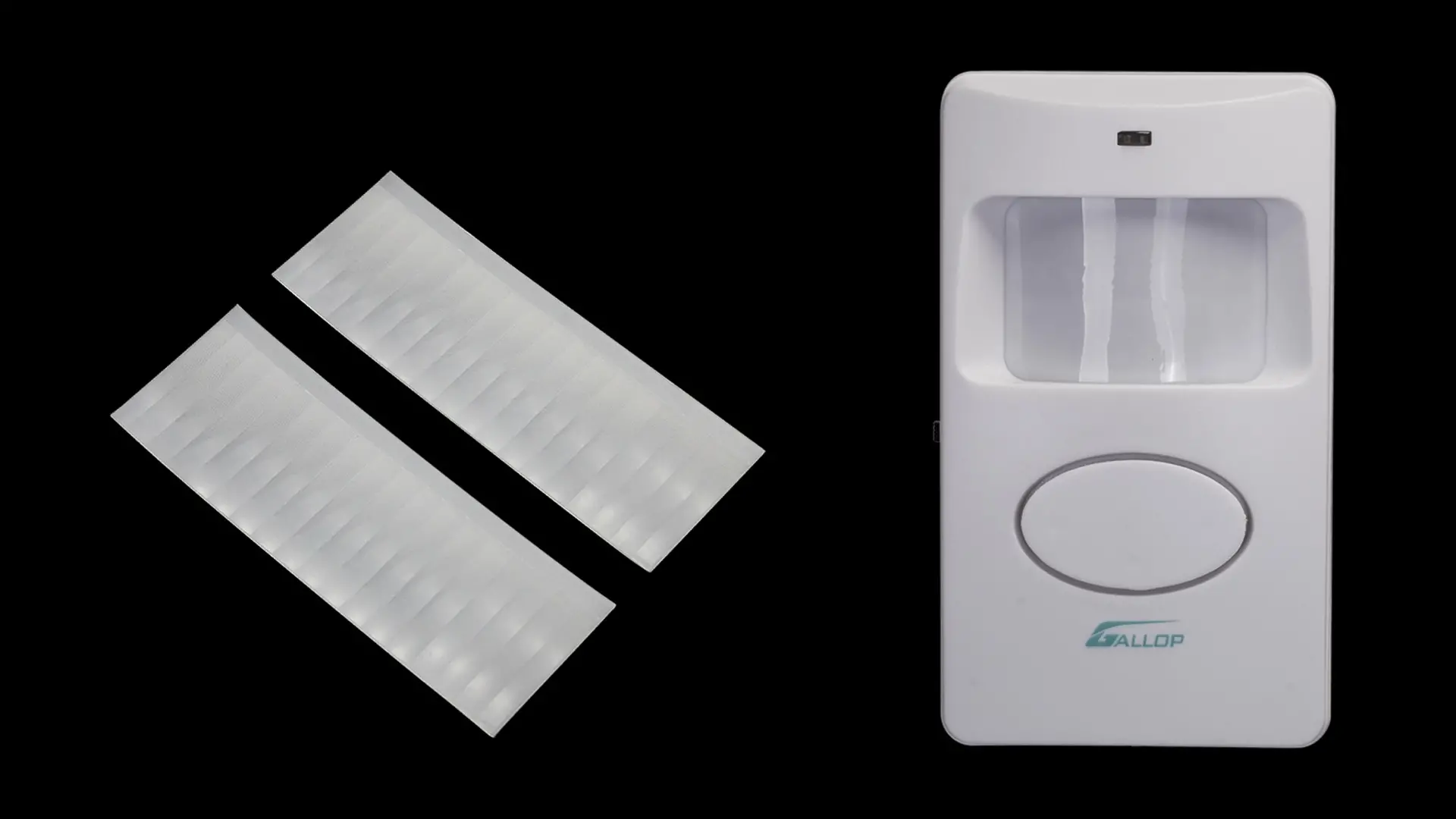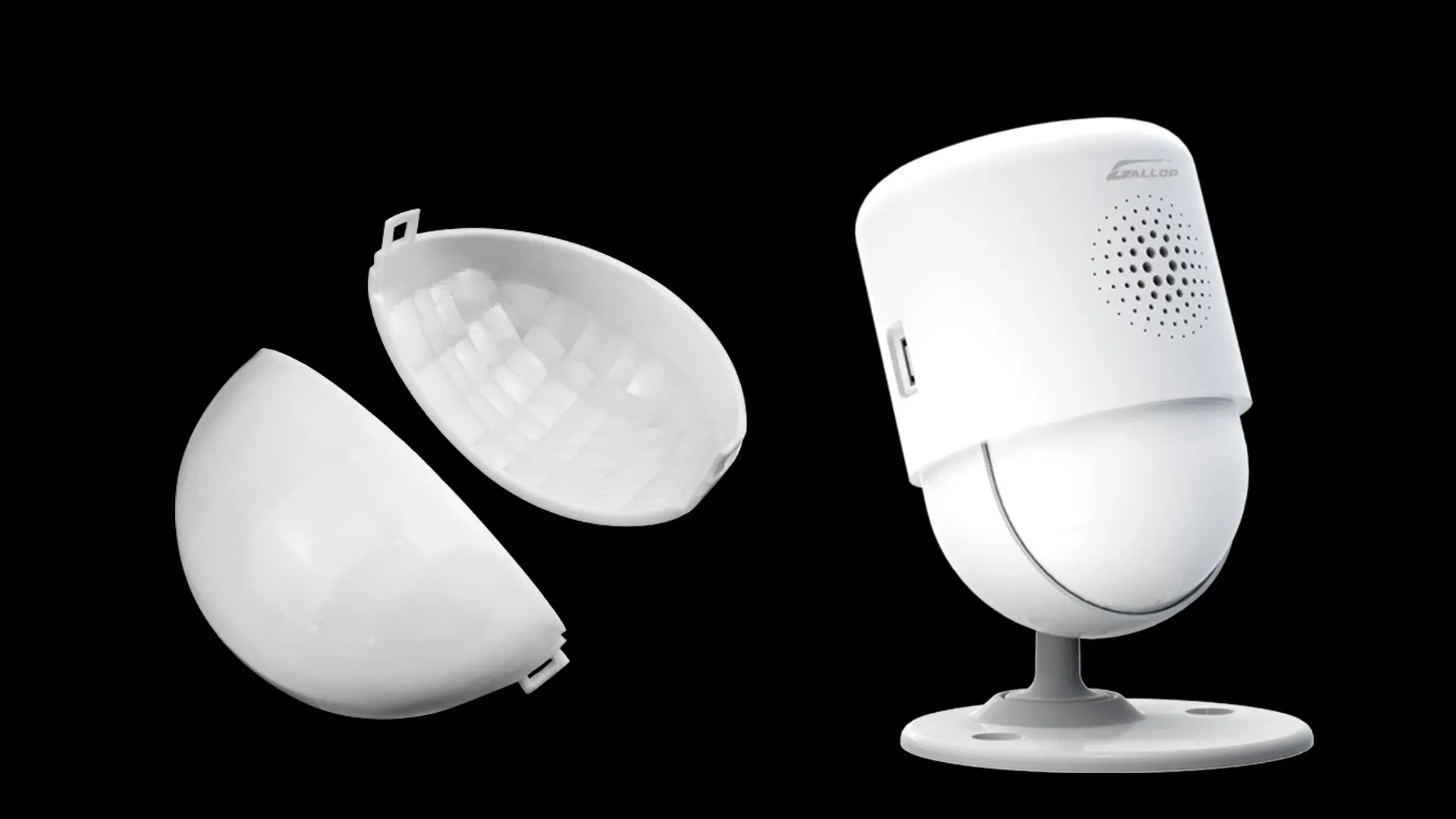目录
ToggleA Wireless PIR motion detector is a kind of device that can sense humans and animals through infrared induction.As the detection angle and detection distance for the different wireless PIR motion detectors are different, how should we choose a suitable wireless PIR motion detector?
Understand how these wireless PIR motion detectors work
Each wireless PIR motion detector product is equipped with a PIR sensor component, but the PIR sensor component can only emit infrared light in a straight line, so it is necessary to install a Fresnel lens in front of the PIR sensor component to make the infrared sensing function effective. The back of the Fresnel lens has multiple angles reflection surface. When the PIR sensor component emits infrared light, the infrared light would be refracted from the back of the Fresnel lens and would be diffused toward various regions of the outside world. When people or animals pass through the region, the infrared light is sensed through the Fresnel lens and sent back to the detector to ring an alarm.
Fresnel lenses are available in several models, depending on the area and range of sensing required for the wireless PIR motion detector.
Fresnel lenses have a variety of shapes, the most commonly used is the circular lens, this lens has the advantage of a 360° internal refraction surface, can monitor every area, and is mostly used in the wireless PIR motion detector that needs to be installed on the top of the building.

The second is a semi-cylindrical lens with an induction Angle of 120°~180 °, which is suitable for wireless PIR motion detectors that need to be installed and used on the wall.

The third type is the 4/1 spherical lens, which has a spherical 4/1 sensing region and is often used in wireless PIR motion detectors that need to detect a local area.

The above-mentioned Fresnel lenses are commonly used in wireless PIR motion detectors. Different lenses will affect the sensing area, sensing angle, and sensing distance of wireless PIR motion detectors. Therefore, the corresponding wireless PIR motion detector should be selected before installing the detector.
Conclusion
When choosing a suitable wireless PIR motion detector, it is essential to consider the specific requirements of the area where it will be installed. Factors such as the detection angle, range, and mounting location play a crucial role in determining the effectiveness of the motion detector. Additionally, it is important to ensure that the wireless PIR motion detector is compatible with the existing security system and can communicate seamlessly with other devices. Regular maintenance and testing of the motion detector are also recommended to ensure optimal performance and reliability. By selecting the right wireless PIR motion detector and understanding how it works, you can enhance the security and surveillance capabilities of your home or business.
0







